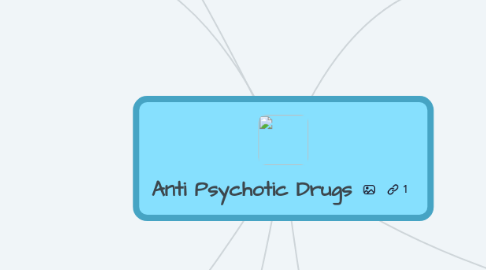
1. Iatronogenic parkinsonism
2. Ortostatic hypertension
2.1. Increase falls
3. Classification of Anti-psychotic Agents
3.1. Typical
3.1.1. First generation typical anti-psychotic
3.1.1.1. Chlorpromazine
3.1.1.2. Fluphenazinedecanoate
3.1.1.3. Haloperidol
3.1.1.4. Perphenazine
3.1.2. Dopamine antagonist (D2)
3.1.3. Conventional
3.1.4. Neuroleptics
3.1.5. Mechanism of Action
3.1.5.1. Mesocortical Pathway
3.1.5.1.1. Potential worsening of negative sign, induce secondary negative symptom and cognitive effect due to blockage of dopaminergic transmission which have already decreased
3.1.5.2. Mesolimbic Pathway
3.1.5.2.1. Improve positive sign due to blockage of excessive dopaminergic transmission
3.1.5.3. Nigrostriatal Pathway
3.1.5.3.1. Extrapyramidal symptom due to D2 receptor blockage
3.1.5.4. Tuberoinfundibular Pathway
3.1.5.4.1. Increase prolactin levels due to D2 blockage
3.2. Atypical
3.2.1. Second generation atypical anti-psychotic
3.2.1.1. Clozapine
3.2.1.2. Olanzapine
3.2.1.3. Paliperidone
3.2.2. Serotonin 2A / D2 antagonist but greater functional blockage of 5HT2A receptors
3.2.3. Dissociate more rapidly from D2 receptors
3.2.4. Mechanism of Action
3.2.4.1. Mesocortical Pathway
3.2.4.1.1. Potential improvement negative sign due to much increase dopaminergic secretion
3.2.4.2. Mesolimbic Pathway
3.2.4.2.1. Improve positive sign due to blockage of excessive dopaminergic transmission
3.2.4.3. Nigrostriatal Pathway
3.2.4.3.1. Decrease acute extrapyramidal side effects
3.2.4.4. Tuberoinfundibular Pathway
3.2.4.4.1. Decrease hyperprolactinaemia
4. Adverse Effect
4.1. Typical Anti-psychotic Drugs
4.1.1. Higher risk of neurological side effect
4.1.2. Extrapyramidal system (major side effect)
4.1.3. Cognitive toxicity
4.1.3.1. Delirium
4.1.4. Sedation
4.1.4.1. Increase falls
4.2. Atypical Anti-psychotic Drugs
4.2.1. Higher risk of metabolic side effect
4.2.2. Insulin resistance
4.2.3. Weight gain
4.2.4. Tardive Dyskinesia
5. Dopamine inhibit release of excessive ACH (maintain normal motor activity)
6. Dopamine Pathway
6.1. Mesolimbic Pathway
6.1.1. Projects from ventral tegmental area (VTA) in the brainstem to nucleus accumbens (NA)
6.1.2. Regulation of emotional or behavior
6.1.3. Predominant pathway regulating positive symptom of psychosis
6.2. Mesocortical Pathway
6.2.1. Dorsalateral Prefrontal Cortex (DLPFC)
6.2.1.1. Projects from midbrain VTA but sends axon to dorsalateral prefrontal cortex
6.2.1.2. Negative and cognitive symptom of schizophrenia
6.2.2. Ventromedial Prefrontal Cortex (VMPFC)
6.2.2.1. Projections specifically to ventromedial prefrontal cortex
6.2.2.2. Negative and affective (mood) symptom of schizophrenia
6.3. Nigrostriatal Pathway
6.3.1. Projects from substantial nigra to basal ganglia or striatum
6.3.2. Part of extrapyramidal nervous system and regulative movement
6.3.3. In untreated schizophrenia activation of pathway is relatively normal
6.4. Tuberoinfundibular Pathway
6.4.1. From hypothalamus to anterior pituitary regulates prolactin secretion into circulation
6.4.2. Dopamine inhibits prolactin secretion
6.4.3. In untreated schizophrenia activation of pathway is relatively normal
7. Excessive dopaminergic activity control schizophrenia
7.1. Drugs that increase dopaminergic activity
7.1.1. Example : Levadopa & Amphetamine
7.1.2. Either aggravate existing schizophrenia
7.1.2.1. Induce a psychosis

